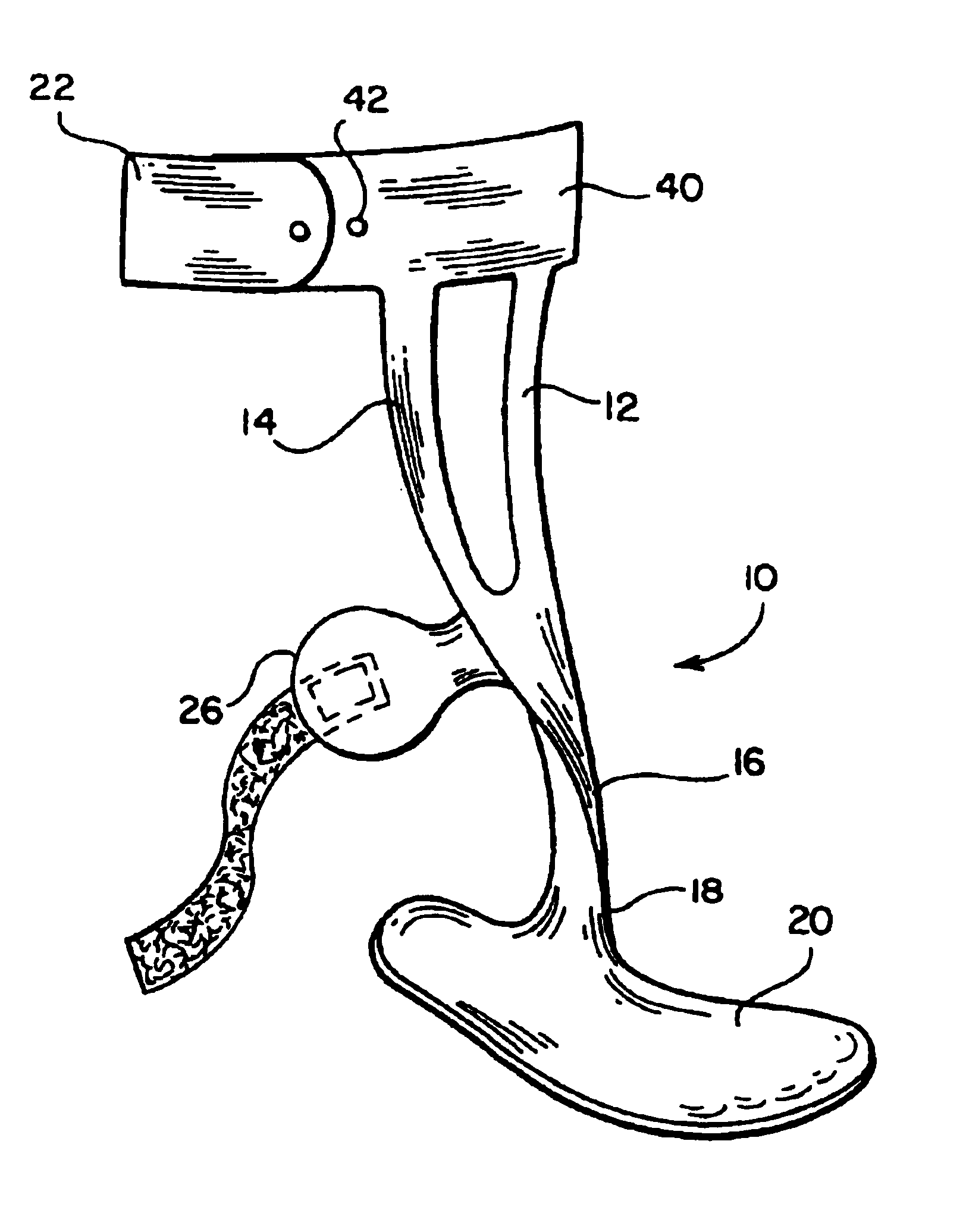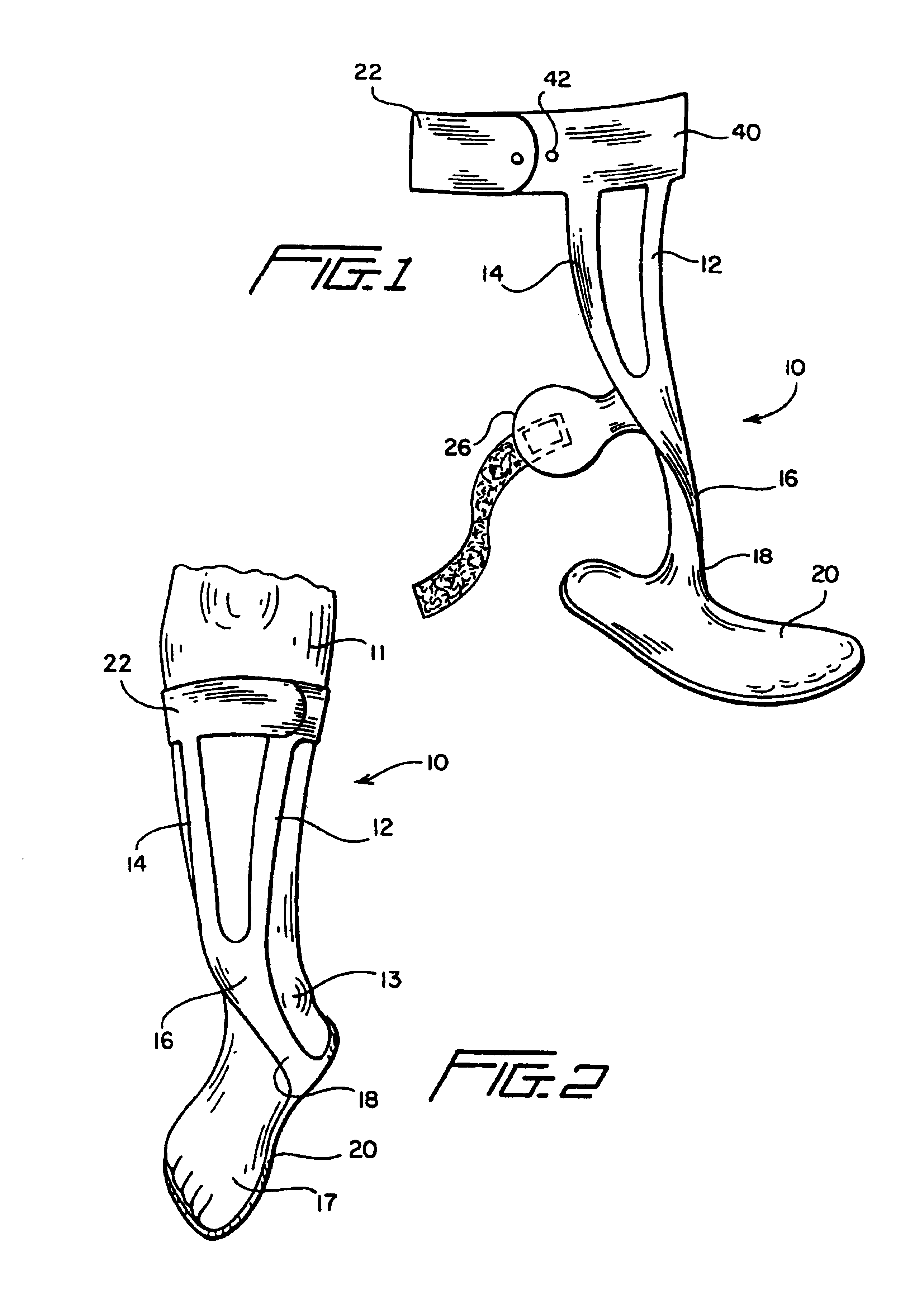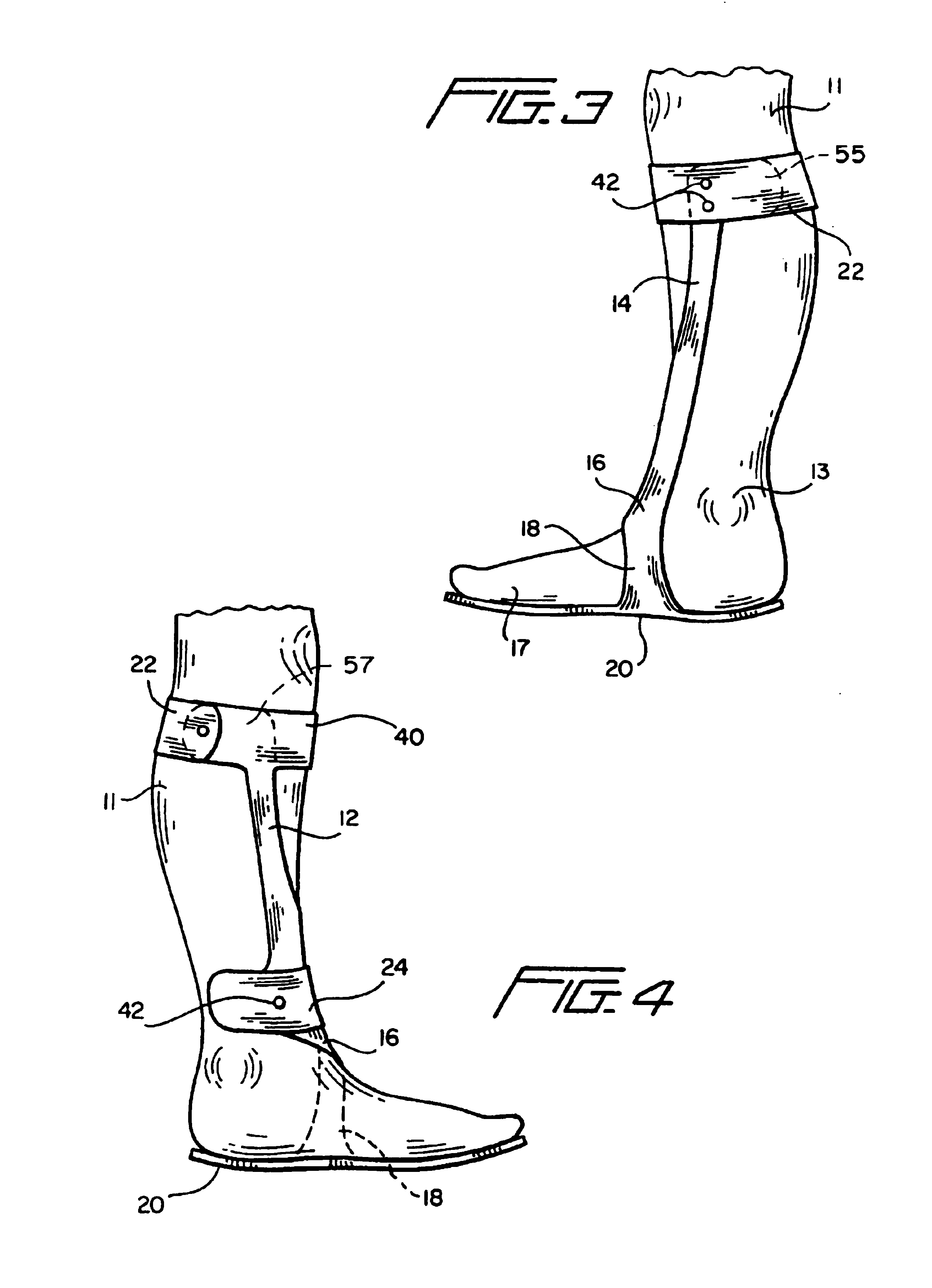Ankle-foot orthosis
an ankle and orthotic technology, applied in the field of orthotics, can solve the problems of inability to clear the toe, excessive plantar flexion, inability to control the falling of the foot, etc., and achieve the effect of variable stiffness properties
- Summary
- Abstract
- Description
- Claims
- Application Information
AI Technical Summary
Benefits of technology
Problems solved by technology
Method used
Image
Examples
Embodiment Construction
[0037]With reference to FIGS. 1 and 2, a preferred embodiment of the ankle-foot orthosis of the present invention is shown. The ankle-foot orthosis generally comprises a monolithic frame 10 including at least one layer of fabric impregnated with a hardened structural resin. In this embodiment, the orthosis includes lateral and medial anterior support members 12, 14, respectively, configured and dimensioned to extend downwardly from below a knee of a patient's leg 11 along the anterior of the leg 11 thereby defining a clearance therebetween along a portion of the length of the leg 11. The lateral and medial anterior support members 12, 14 join in advance of a patient's ankle joint 13 to define an anterior ankle portion 16. The ankle portion 16 preferably extends to a medial connection 18 extending around the medial side of a patient's ankle 13 and connecting to a foot plate 20 located beneath the sole of a patient's foot 17.
[0038]Alternatively, the ankle portion may extend to a later...
PUM
 Login to View More
Login to View More Abstract
Description
Claims
Application Information
 Login to View More
Login to View More - R&D
- Intellectual Property
- Life Sciences
- Materials
- Tech Scout
- Unparalleled Data Quality
- Higher Quality Content
- 60% Fewer Hallucinations
Browse by: Latest US Patents, China's latest patents, Technical Efficacy Thesaurus, Application Domain, Technology Topic, Popular Technical Reports.
© 2025 PatSnap. All rights reserved.Legal|Privacy policy|Modern Slavery Act Transparency Statement|Sitemap|About US| Contact US: help@patsnap.com



